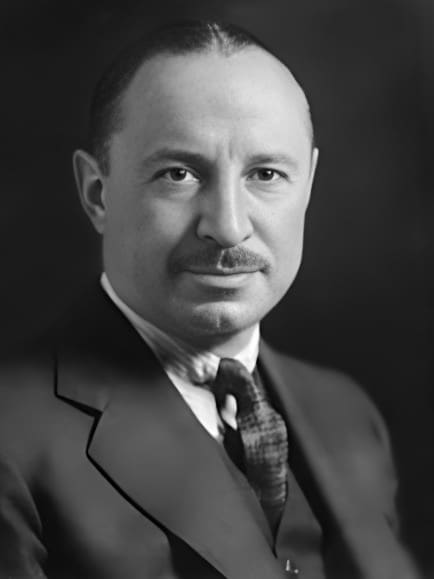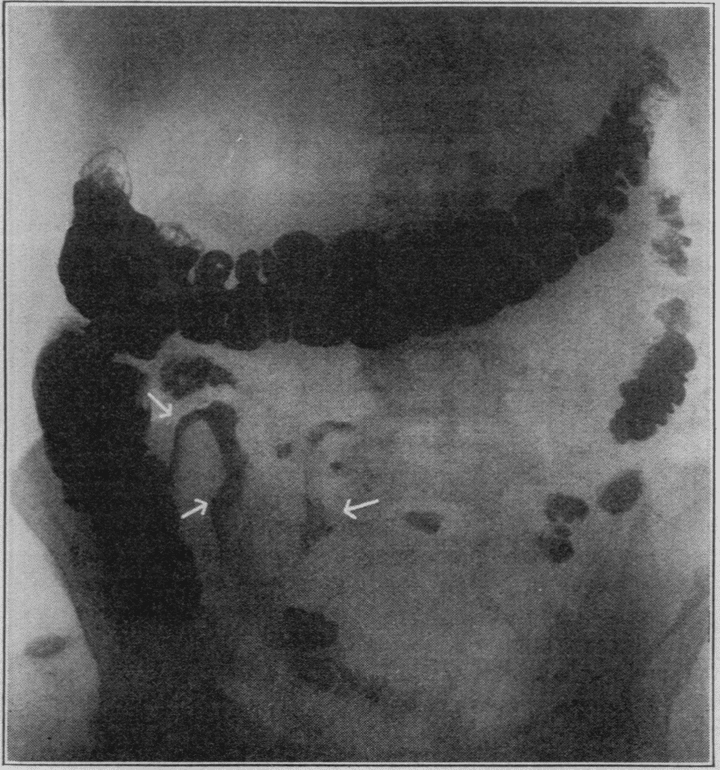Leon Ginzburg

Leon Ginzburg (1898-1988) was an American surgeon and gastroenterologist.
Ginzburg was a pioneering American gastrointestinal surgeon and clinical researcher whose name remains inextricably linked to the first detailed description of regional ileitis, later known as Crohn’s disease. Though overshadowed by Burrill B. Crohn in the historical record due to naming conventions, Ginzburg played an equal and essential role in identifying and characterizing this new clinical entity.
Born in New York City, Ginzburg completed both undergraduate and medical degrees at Columbia University. He trained in surgery at Mount Sinai Hospital, where he came under the mentorship of Dr. A.A. Berg. His early exposure to inflammatory and granulomatous diseases of the bowel during surgical residency laid the foundation for his later contributions. By the late 1920s, he and Dr. Gordon D. Oppenheimer were compiling and analyzing cases of what they described as “segmental, hypertrophic ulcerative stenosis of the distal ileum.”
The landmark 1932 paper on “regional ileitis” was initially drafted by Ginzburg and Oppenheimer and later expanded with additional clinical material by Crohn. Despite controversies over authorship order and academic recognition, the trio’s work catalyzed recognition of the disease and influenced generations of clinical research. Ginzburg remained committed to surgical education, leading the department at Beth Israel Hospital from 1947 to 1967, and mentoring young clinicians at Mount Sinai and New York University.
As director of surgery at Beth Israel, Ginzburg modernized surgical practices and mentored many students. He held teaching positions at Mount Sinai and NYU, and was known for high standards, clinical precision, and promotion of ethical scholarship.
He retired in 1967 but remained active in teaching and correspondence until his death in 1988. He was remembered as a precise surgeon, a thoughtful investigator, and a defender of academic fairness.
Biography
- 1898 – Born in New York City.
- 1920s – Trained in surgery under Albert Ashton Berg (1872–1950) at Mount Sinai Hospital.
- 1925 – Began systematic study of granulomatous bowel diseases.
- 1927 – Published first article on intestinal stenosis related to granulomatous disease (Ann Surg).
- 1928 – Second contribution on late intestinal stenosis in strangulated hernia (Ann Surg).
- 1930 – Began collaboration with Gordon Oppenheimer (1900-1974) on non-specific inflammatory bowel conditions.
- 1931 – Drafted initial manuscript on segmental ileitis.
- 1932 – Coauthored seminal paper “Regional Ileitis” with Crohn and Oppenheimer, published in JAMA.
- 1933 – Published follow-up study on granulomatous colitis.
- 1947–1967 – Served as Director of Surgery, Beth Israel Hospital, Manhattan.
- 1950s – President of Beth Israel’s medical board.
- 1963 – Retired from Mount Sinai after 40 years of service.
- 1967 – Retired as Director of Surgery, Beth Israel.
- 1988 – Died March 19 in Manhattan, aged 89.
Medical Eponyms
Crohn’s disease (1932)
Crohn’s disease is a chronic, immune-mediated inflammatory bowel disease (IBD) characterized by transmural inflammation that can affect any part of the gastrointestinal tract, from the mouth to the anus. The terminal ileum and colon are most commonly involved, with a predilection for segmental (“skip”) lesions and a tendency toward complications such as strictures, fistulae, and abscess formation. Extraintestinal manifestations—including arthritis, uveitis, and erythema nodosum—are also frequently observed.
Ginzburg’s earliest investigations of granulomatous ileal disease began in 1925. Alongside Gordon Oppenheimer (1900-1974), he catalogued 12 surgically treated cases before Burrill Bernard Crohn (1884-1983) became involved.
May 1932 – Ginzburg, along with Crohn and Oppenheimer present “Terminal Ileitis: A New Clinical Entity” at the AMA in New Orleans. Initially listed as Crohn’s sole paper, co-authors were added in alphabetical order, after intervention by collaborating Mount Sinai surgeon Albert Ashton Berg (1872–1950).
October 1932 – Their article is published in JAMA as “Regional Ileitis: A Pathologic and Clinical Entity” — a concise clinicopathologic description of transmural necrotising inflammation in the terminal ileum. A case series of 14 patients aged between 17-years to 52-years:
We propose to describe, in its pathologic and clinical details, a disease of the terminal ileum, affecting mainly young adults, characterized by a subacute or chronic necrotizing and cicatrizing inflammation. The ulceration of the mucosa is accompanied by a disproportionate connective tissue reaction …associated with the formation of multiple fistulas.
The disease is clinically featured by symptoms resembling those of ulcerative colitis, ie, fever, diarrhea, emaciation, and a mass in the right iliac fossa usually requiring surgical resection. The etiology is unknown.
Crohn, Ginzburg, Oppenheimer 1932

In later life, Ginzburg publicly addressed misrepresentations in the historical account of regional ileitis. His 1986 letter to Gastroenterology articulated the original contribution of the surgical team, reinforcing the collaborative origins of the landmark study and correcting Crohn’s retrospective claims.
Major Publications
- Crohn BB, Ginzburg L, Oppenheimer GD. Regional ileitis; a pathologic and clinical entity. JAMA, 1932; 99: 1323-1329.
- Ginzburg L, Oppenheimer GD. Non-Specific Granulomata of the Intestines: Inflammatory Tumors and Strictures of the Bowel. Ann Surg. 1933;98(6):1046‐1062.
- Ginzburg L, Oppenheimer GD. Urological complications of regional ileitis. J Urol. 1948; 59(5): 948‐952.
- Ginzburg L. The road to regional enteritis. Mt Sinai J Med. 1974; 41(2): 272‐275.
- Ginzburg L. Regional enteritis: historical perspective (B. Crohn and L. Ginzburg) Gastroenterology. 1986; 90(5 Pt 1): 1310-1.
References
Biography
- Lyons AS. Reminiscences of Leon Ginzberg, 1965. Mount Sinai Hospital project
- Dr. Leon Ginzburg, 89, Surgeon and Professor. The New York Times. March 25, 1988
- Ginzburg, Leon – Papers, 1927-1987. Mount Sinai Digital Repository
Eponymous terms
- Janowitz HD. An imaginary conversation with the gang of three: a ghostly interview with Burrill B. Crohn, Leon Ginzburg, and Gordon Oppenheimer. Mt Sinai J Med. 1996 Jan;63(1):61-5.
- Aufses AH Jr. The history of Crohn’s disease. Surg Clin North Am. 2001; 81(1): 1‐vii.
- Franklin JL. Eisenhower and Crohn’s Disease. Hektoen International 2009; 1(2)
Eponym
the person behind the name
Dr. Tim Friedmann, MD is an Assistant Professor in the Department of Emergency Medicine at the Icahn School of Medicine at Mount Sinai. He is an Assistant Program Director for the residency program and works clinically at Mount Sinai Hospital and Elmhurst Hospital | Sinai EM |
BA MA (Oxon) MBChB (Edin) FACEM FFSEM. Emergency physician, Sir Charles Gairdner Hospital. Passion for rugby; medical history; medical education; and asynchronous learning #FOAMed evangelist. Co-founder and CTO of Life in the Fast lane | On Call: Principles and Protocol 4e| Eponyms | Books |

